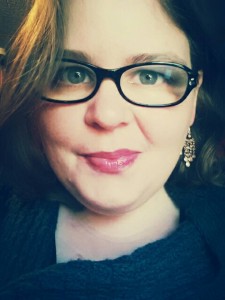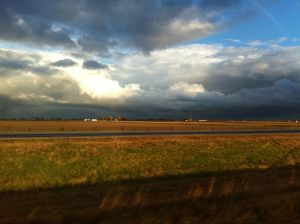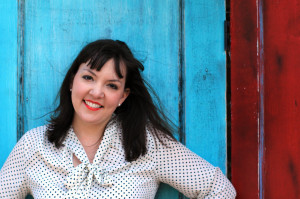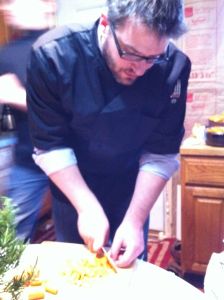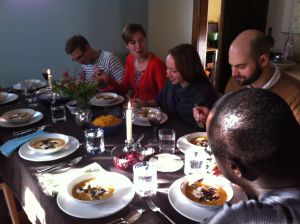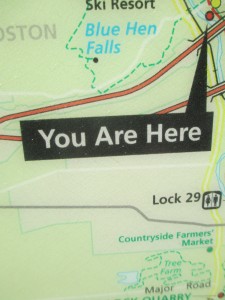My parents left Pittsburgh when I was a toddler, but family lore still recalls me pointing delightedly at its blue and white bus stop signs, imploring, “Stop, bus!” Several times a year we returned, crossing the Pennsylvania Turnpike and the Tubes to visit my Grandma, whose porch housed a galvanized dairy box, although the milkman had long since ceased service by then. On rainy Sundays, my brother and I chased pigeons outside Downtown’s gothic Presbyterian church. Inside we slid down inexplicably existent bowling lanes and sat for children’s sermons at the same poinsettia-laden altar where our parents married years before.
The Steel City coaxed me back for a longer stay the summer before my senior year of college. At the North Side’s Pittsburgh Project, I learned more about justice over three months in community than I had in all my years in the classroom or church. Daily navigating a mysterious tangle of neighborhoods, armed with plucky determination and a stack of MapQuest print outs, my teammates and I discovered how many Pittsburgh “roads” are merely stairwells and how true is the saying, “You can’t get there from here.” I savored my first cherry ice ball from Gus and Yia Yia’s historic cart and discovered the public radio gem that is WYEP.
 My official Pittsburgh homecoming occurred the following summer. One week before our wedding and freshly hired at a church mere blocks from the hospital where I was born, Jim and I arrived to scout any apartment within reach of our meager summer camp paychecks: decrepit student housing in Oakland, dingy curiosities in Polish Hill, and an alleged one-bedroom in Friendship consisting of a dark kitchenette and one tiny bathroom atop a stairwell. (The split landing was apparently where a mattress was to go.)
My official Pittsburgh homecoming occurred the following summer. One week before our wedding and freshly hired at a church mere blocks from the hospital where I was born, Jim and I arrived to scout any apartment within reach of our meager summer camp paychecks: decrepit student housing in Oakland, dingy curiosities in Polish Hill, and an alleged one-bedroom in Friendship consisting of a dark kitchenette and one tiny bathroom atop a stairwell. (The split landing was apparently where a mattress was to go.)
When we discovered a third floor walk-up in a brick Bloomfield row house, we knew our little family of two had come home to the East End at last. Boasting a sunny kitchen outfitted in fifties-era fixtures and compact appliances, Hobbit ceilings, and actual sleeping quarters, the apartment felt palatial at $325 a month. So what if it was accessible only by fire escape and lacked a bedroom door? The Shire was ours, and God bless the youth group parents who dropped off teenagers in the back alley for dinners and movie nights. Great is your reward and greater our memories: climbing out of Allegheny Cemetery that time we got locked in, ice skating and frisbee at Schenley, and cheering graduation at the Mellon Arena.
We owned one car, two bikes, and most everything we needed (excepting perhaps a washer-dryer or savings account). Jim still remembers bike messaging as his favorite job; I remember the way my breath caught when he said he’d been hit by a car and how nearly every dollar he earned seemed to end up at Kraynick’s Bike Shop. We slid down the icy fire escape taking out the trash, walked to Tram’s for pho, and biked downtown to see Wilco at the Point. I celebrated a series of birthdays along Forbes, marching against the Iraq war alongside aging hippies, anarchists, and once, a donkey.
In the Cultural District, we scored rush tickets to RENT, not far from Planned Parenthood where I got my annual exam. Neither Jim nor I dressed up for work, but when we scored free symphony tickets, you know we turned up in our finest at Heinz Hall. We once sat behind playwright August Wilson at a tiny Lawrenceville performance of Ma Rainey’s Black Bottom, and the only other man I ever saw naked was an actor in a cordoned-off warehouse at the edge of the Strip. The audience shivered on metal bleachers in wool coats and gloves, our breath visible beneath the heat lamps, and he took a shower right there in front of us.
Cockroaches and an absentee slumlord eventually drove us further up Liberty Avenue to an apartment atop Mariani’s Pleasure Bar, where the crashing trash pick-up woke us each morning at three, and the bells at St. Joseph’s called the faithful to prayer. I couldn’t begin to add up how much money we spent on parking tickets or tiramisu from Groceria Italiano next door. From our sticky tar roof, we hosted confirmation classes and friends for hibachi-grilled chicken, and we watched fireworks, movie crews, and bocce tournaments: broke, happy, and in love with each other and our skyline.
It’s been ten years since our exodus for pastures only literally greener, but my heart still races at the sight of yellow bridges and Rick Sebak documentaries, and the memory of rush hour bike commutes along Craig Street. There’s no place like home and no home like between the Three Rivers.
* * * * *
 “Wherever I’m With You” was written by Suzannah Paul. Suzannah is a Pennsylvania-based religion writer on the topics of liberation theology and embodied faith. When not squeezed into a summer camp dining hall, Suzannah and her family set extra places at their farmhouse table, and she writes love letters to the broken, beautiful Church at The Smitten Word.
“Wherever I’m With You” was written by Suzannah Paul. Suzannah is a Pennsylvania-based religion writer on the topics of liberation theology and embodied faith. When not squeezed into a summer camp dining hall, Suzannah and her family set extra places at their farmhouse table, and she writes love letters to the broken, beautiful Church at The Smitten Word.
